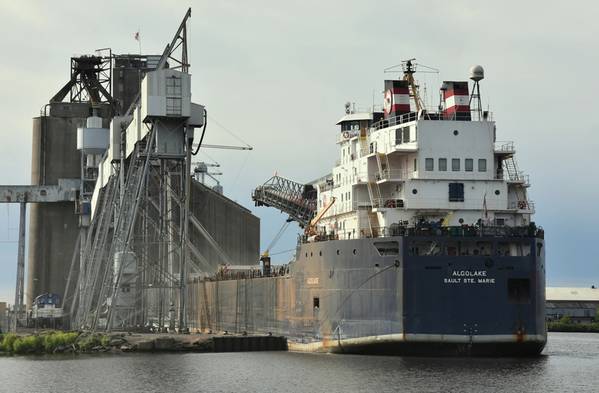As marine shipping continues to support the growth of the Canadian and U.S. economies, St. Lawrence Seaway cargo shipments to-date for 2917 are 14 percent ahead of 2016 volumes.
Total cargo tonnage from March 20 to September 30 reached 24.3 million metric tons – 3 million metric tons more compared to the same period in 2016, according to The St. Lawrence Seaway Management Corporation.
“Our results point to the strength of the Canadian and U.S. economies. Export shipments of mined products such as iron ore and dry bulk via the Seaway have grown dramatically this year; while domestic demand for road salt and stone has also been much stronger in the Great Lakes region,” said Terence Bowles, President and CEO of The St. Lawrence Seaway Management Corporation. “The Great Lakes-Seaway shipping system is also attracting more high-value cargos such as steel, machinery and other goods that support the growth of our manufacturing and construction sectors.”
Inland shipping’s strong 2017 performance and its vital role in supporting Canadian economic growth will be highlighted today as marine commerce executives and their customers meet with Canadian federal government representatives during Marine Day on the Hill, hosted by the Chamber of Marine Commerce.
Bruce Burrows, President of the Chamber of Marine Commerce, said, “Marine Day on the Hill is about sending the message to our political leaders that inland and coastal shipping is an important Canadian strategic asset that has tremendous potential to grow. We’d like government to recognize marine shipping’s significant environmental and economic benefits in its approach to transportation planning and policy-making.”
Year-to-date Seaway iron ore shipments (from March 20 to September 30) reached 5.9 million metric tons, an increase of 58 percent driven primarily by U.S. iron ore pellet exports to Asia. Road salt shipments, including from Ontario mines in Goderich and Windsor, have surpassed 2.2 million metric tons, up 40 percent over 2016. High-value general cargo (which include steel, aluminum, project cargo) shipments via the Seaway totaled 2.3 million metric tons, up 35 percent.
Aaron H. Degodny, Chief Commercial Officer, of Rand Logistics, Inc., which provides bulk freight shipping services throughout the Great Lakes region, said: “Tonnage hauled in August and September was among the highest on record for Rand Logistics and our affiliate companies. This was reflected in our 2017 Miracle Month Program which raised approximately $132,000 for children’s charities in the Great Lakes Region which are selected by our customers. Moving into the fall, we expect overall demand to remain firm and are seeing an increase in activity in grain as the harvest progresses in Canada and the United States. We recently reintroduced two of our Canadian flagged bulk carriers back into service to meet the needs of our grain customers.”
A number of Canadian Great Lakes ports are reporting upswings in activity.
At the Port of Windsor, year-to-date total port cargo volumes are up almost 20 percent over the same period in 2016, led by salt, steel and grain shipments all having increased in the range of 27-30 percent. Stone and petroleum shipments are both up 8 percent.
David Cree, President and CEO of Windsor Port Authority, said, “We’re having a very good year. We expected a bit of a bounce back after last year was a little slow, but we’re quite pleased we’re ahead of projections at this point.”
At the Port of Hamilton, year-over-year cargo results to September 30 are showing positive results in key sectors.
In the agri-food sector, the port is seeing the bright side of a soggy summer: grain is up 14 percent year-over-year, led by strong wheat exports. Heading into soybean harvest season, we expect to sustain this encouraging trend. We are seeing the positive effects of new terminal capacity on tonnage, as G3’s new 50,000 MT Hamilton terminal came into full operation this year.
Ian Hamilton, President and CEO of the Hamilton Port Authority, added, “Hamilton’s port is critical infrastructure for manufacturing in southern Ontario, handling finished steel that is used in everything from cars to construction. Finished steel tonnages are trending 19 percent higher so far this year. The port is also an essential export gateway for Ontario manufactured goods. For example, the vessel Fairlane recently departed carrying factory components that were manufactured in Cambridge, Ontario, and shipped through the Port of Hamilton to a U.S. customer.



